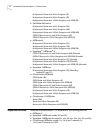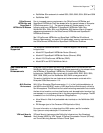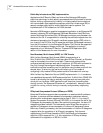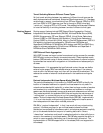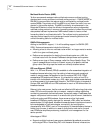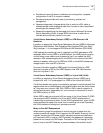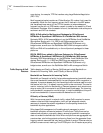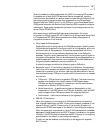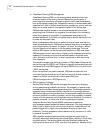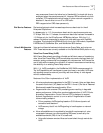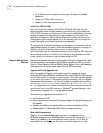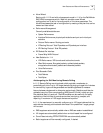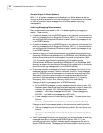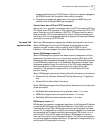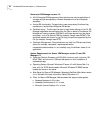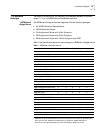
16 ENTERPRISE OS SOFTWARE VERSION 11.4 RELEASE NOTES
■ Class-Based Queuing (CBQ) Management
Class-Based Queuing (CBQ) is a link-sharing packet scheduler which is an
enhanced version of the existing Protocol Reservation queuing policy. It
performs priority scheduling and supports specific traffic class characteristics,
such as the average transfer rate. It supports a hierarchy of service classes, each
associated with a set of QoS attributes (such as, average rate, priority, and max
delay) and a packet queue to hold packets marked for the service class.
CBQ provides weighted (based on the allocated bandwidth) round robin
scheduling when the class is not congested, but switches to the link sharing
mode during periods of congestion. It regulates each class queue to its
allocated bandwidth, but allows a congested class to borrow bandwidth from
its under-utilized parent class.
When a class queue builds up due to packet arriving at higher rate than the
class’s allocated bandwidth, CBQ employs a packet drop policy to manage the
queue length/latency. By default, the simple “tail drop” is invoked to discard
the most recently arrived packet for the congested queue/class. The more
effective RED dropper can also be optionally enabled on a CBQ class queue.
CBQ also supports traffic prioritization. Higher priority classes are serviced first,
classes with the same priority are then serviced based on weighted round
robin. Borrowing is allowed only if a class is configured to allow borrowing
from its parents.
The network manager may define any number of CBQ classes. Policies can be
defined that map the DSCP in the TOS-byte to a specific service class to provide
the desired QoS. Initial RSVP support will restrict RSVP flows to the well-known
“RSVP” service class.
Given the significant per packet overhead, CBQ does not scale well with
multi-level class hierarchies and would perform best with a small number of
classes in a shallow tree structure on lower speed WAN links.
CBQ will be supported on PPP/FR ports only.
■ RED Congestion Avoidance
Random Early Discard (RED) actively manages the queue size by dropping
arriving packets using probability as follows. The probability of packet drops
increases as the estimated average queue size grows. The average queue size is
computed using a simple exponentially weighted moving average estimator.
RED starts dropping arriving packets when the queue size exceeds the defined
minimum threshold in number of packets), and the drop probability increases
linearly with the queue size until the defined maximum threshold (in number of
packets) is reached - at which point all arriving packets are dropped.
Weighted Random Early Discard (WRED) implements an additional
drop-precedence based preferential discard mechanism. The drop-precedence
value is used to determine the minimum and maximum thresholds–such that
packets tagged with a higher drop-precedence value has a higher drop
probability. The drop-precedence value is determined by the amount of traffic
in excess of the rate limit.
RED congestion avoidance scheme actively manages the queue length to
efficiently reduce both packet drops and queue latency, resulting in lower delay
and better service. The random packet drop also effectively breaks up the
traffic synchronization due to TCP’s “slow start than speed up” behavior, which



